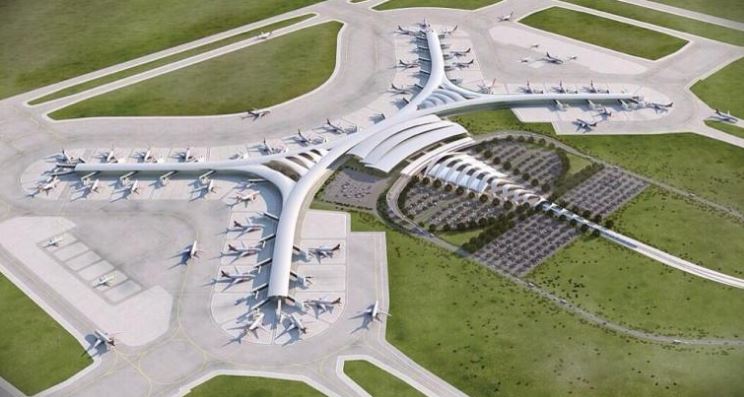Migrations
Migration is the movement of people from one part of the country to another, or from one country to another.
The place where people move from is known as the source, while the place they move to is the destination.
Migration may be permanent or temporary.
It may be voluntary if people choose to move, or forced if they have no choice but to move.
If people move from one part of the country to another, it is called internal or local migration.
Reasons Why People Migrate
Today, people migrate for different reasons.
The reasons that force people away from their homes are called push factors. These factors do not give people much choice on whether or not they should move.
Those factors that attract people to settle in a place are called pull factors.
| Push factors |
Pull factors |
- No land to farm
- Floods
- Drought and famine
- Disagreements or fighting within the family
- Land clashes
- Attacks from hostile neighbours
- Lack of social amenities like water, hospitals or electricity
- Politically motivated violence
|
- Better political environment
- Better housing
- Access to better education
- Job opportunities
- Better living standards
- Better security
- Need to join family members
- Bright lights and night life in the city
- Better medical facilities
|
Types of Migrations
Migrations in Kenya can be divided into the following four main types;
1. Rural-urban migration
This is the movement of people from rural areas to urban centres.
This is the most common type of migration.
People migrate to towns to look for jobs because towns are centres for administration, industry, transport, and trade.
2. Rural-rural migration
This involves the movement of people from one rural district to another, especially to work on plantations.
These migrations may be temporary or permanent and are not very common.
When the government set up settlement schemes to settle landless people, people had to migrate from their rural districts of origin (the source) to the schemes (the destination), which were also rural areas.
Another example was the establishment of Mwea Tebere and Ahero irrigation schemes.
People who were displaced by the schemes had to migrate to other rural areas for resettlement.
3. Urban-rural migration
This usually takes place when people living in urban areas retire and go back to settle in their rural districts or homes of origin.
Some people also move when they get jobs in rural-based industries like agriculture or mining.
Urban-rural migration rarely takes place in Kenya.
4. Urban-urban migration
This involves movement of people from one town to another.
It occurs when people are transferred to work in other towns or when people get better jobs in other towns.
It can also take place when people move to settle in towns with better facilities.
It can also take place when the government changes its administrative headquarters.
For example, the Tanzanian government moved its headquarters from Dar es salaam to Dodoma.
Effects of migration
Rural-Urban migration is the most common type. The effects of rural-urban migration are that it;
- Creates room for farming and settlement in areas where people migrate from.
- Leaves few people in rural areas. These people are mainly the sick, old and the very young
- Makes towns over-crowded with inadequate services
- Causes pollution in urban areas, especially littering
- Causes unemployment in towns
- Increases crime in urban areas because of lack of jobs
- Increases the number of street children in urban centres.
Effects of Urban to Rural Migration
- Reduces congestion in major towns
- Leads to development of rural areas
- Provides labour for farms in rural areas
- Leads to an increase in population in the receiving towns
Effects of Urban to Urban Migration
- Growth and expansion of towns
- Receiving towns may start experiencing the challenges that come with rapid growth of towns.
Effects of Rural to Rural Migration
- Population is spread out more evenly
- Increased food production and reduced pressure on land in crowded areas
Migrations into and from Kenya (external migrations)
Kenya experiences two types of migrations:
- Immigration which is the movement of people into the country

- Emigration which is the movement of people out of the country.
Immigration
People migrate into Kenya for different reasons.
Below are some of the reasons:
- Political instability or civil war in their countries
- Employment in international agencies or companies
- Admission of foreign students in Kenyan educational institutions
- Availability of business opportunities which attract foreign investors.
Effects of Immigration;
- Increased population exerts extra pressure on available resources
- Foreign investors create wealth and employment opportunities
- Increase in crime as foreigners may bring in dangerous arms
- It encourages sharing and learning of cultural practices and ideas
Emigration
People migrate out of Kenya to other countries for many different reasons
- To study in foreign countries.
- Availability of better employment opportunities in foreign countries
- Change of citizenship to acquire that of another country
- During political difficulties some Kenyans may seek political asylum or go to exile in foreign countries
Effects of Emigration;
- Kenyans studying in other countries acquire and bring home valuable skills which benefit the country
- Availability of better employment opportunities causes well qualified people to leave the country leading to ‘brain-drain’ in Kenya
- Some Kenyans copy unacceptable social behaviour from foreign countries